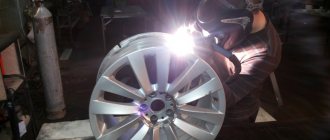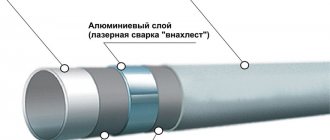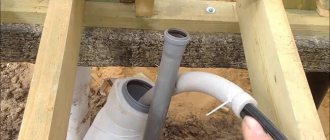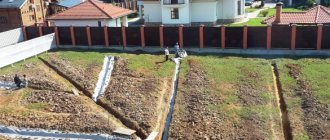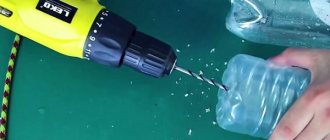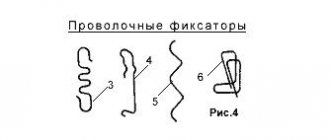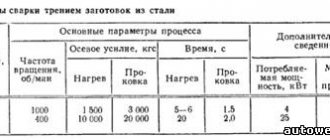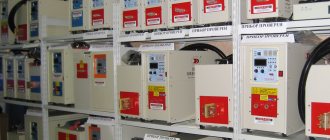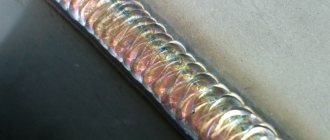The spot method of resistance welding of reinforcement is used in the assembly of frames for reinforced concrete products and the production of meshes from rods. The technology is based on the principle of converting the kinetic energy of current into heat; the metal is joined without the use of additives. Equipment for resistance spot welding is made independently on the basis of existing welding machines. Automatic machines are used to produce reinforcing mesh on an industrial scale. The operating current mode is selected for the reinforcement, taking into account the type of alloy and the thickness of the rod.
Advantages and disadvantages of the method
Like any other method of hot metal joining, the contact-point method has a number of advantages:
- high productivity, especially when using automatic machines;
- low scrap yield, high-quality homogeneous compounds are formed;
- the seam is strong, bears bending and torsion loads;
- no consumables are needed for surfacing; a diffusion layer is formed when the rod melts;
- work is carried out in any spatial position;
- equipment comes in two types: stationary and portable;
- By adjusting the parameters of the operating current, they select the mode for any type of rods:
- no residual stresses are created in the metal.
Along with the advantages, the method has disadvantages:
- the preparatory stage takes a lot of time - there are special requirements for the contact area with the electrodes;
- physical effort is required;
- high energy consumption;
- you need a powerful current source;
- When working with manual equipment, both hands are used, the compression force is limited by the physical capabilities of the welder.
Bath Welding Options
In practice, three methods are used:
- Semi-automatic (in ceramic form).
- Single-, three-phase electric arc using a steel bracket (manual version).
- Automatic slag bath (in copper form).
The most economical option is considered to be one in which linings are not used when connecting the rods. The fact is that their production requires spending a certain amount of time and metal. In the absence of overlays, a compact connection is also ensured.
Methods of resistance welding of reinforcement
First, a few words about the essence of the welding process. Current is supplied to the working area through contact non-consumable electrodes, the rod is placed between them. When the electrical circuit is closed, an electric arc occurs, which heats the metal in a matter of seconds. The impact zone is limited by the area of the electrodes.
The resistance welding method is based on the high resistance of the reinforcement and the principle of converting the kinetic energy of electrons into thermal energy. Contact electrodes are made of non-ferrous metals with low resistance, so they do not heat up during operation. When the contacts are compressed, the diffuse layer is compacted; special lever or pneumatic actuators are used to connect thick reinforcement.
Equipment used
Portable welding machines are made on the basis of an existing high-power welding machine. Copper cable turns are used as the secondary winding. The contacts are compressed by a pliers-type lever device. The remote arms for welding reinforcement are lengthened to increase the pressure on the working area.
There are two types of welding pliers:
- stationary, when one of the levers is tightly fixed to a horizontal platform or work table;
- suspended, when the lever is attached vertically;
- portable, both levers are free, the mobility of the equipment is limited by the length of the wire.
Modular machines or machines are more complex; a cooling circuit is provided, automatic bar feeding is provided, there are additional functions, and it is possible to install several electrodes at once.
Bathtub welding fittings
This method is typically used to connect:
- Reinforcement products of large diameter (2-10 cm).
- Joints of rods arranged in several rows in reinforced concrete structures.
- Joints of flanges made of steel strips with a large cross-section.
This method of welding reinforcement is perfect for foundations and other large reinforced concrete products, complex frames in the construction of various buildings. It ensures the preservation of the strength parameters and rigidity of the structure along the entire length. This welding of reinforcement allows you to create a single load-bearing frame.
The connection can be made both horizontally and vertically. Bath welding of reinforcement of columns and other vertical products can thus be carried out without moving them and bringing them into a horizontal position.
Another advantage is that standard tools are used to make the connection, just like electric arc welding.
Reinforcement spot welding modes
There are two main modes: hard and soft. Each one is worth saying in more detail.
- Spot welding in a soft mode ensures slow heating of the contact zone. The maximum current density does not exceed 100 A/mm2, the current speed is maintained in the range from 1.5 to 3 seconds depending on the diameter of the rod. In soft mode, high-power equipment is used; the electrical network sags less during operation. Reduced risk of residual stresses. When heated, the properties of steel do not change - no hardening effect occurs. The method is used for cold-drawn reinforcing bars.
- The hard mode involves operating at a dense current, from 120 to 300 A per unit area. The speed of exposure is correspondingly lower than in soft mode: from 0.1 to 1.5 seconds. With this method, a hardening effect occurs, so only hot-rolled rods that were heated during the manufacturing process are cooked in a hard mode.
The essence of the method
Before direct welding, a steel form is attached (welded) to the rods. A bath of molten material is formed in it. An electric arc is used for this. The ends of the rods melt at high temperatures. This results in one pool of weld material being created.
Before welding the reinforcement, the ends and surfaces of the rods are cleaned. Scale, corrosion, and dirt are removed from them. To do this, use a stiff brush with steel bristles.
After cleaning, the rods are placed coaxially. There should be a gap between the ends. Its size is less than 1.5 times the diameter of the rods.
When welding column reinforcement, a stamped sheet form acts as a forming element. It is attached to the bottom by welding without the use of additives. The joint is melted over the entire cross-sectional area by performing oscillatory gradual movements with the electrode. With respect to the axes of the rods, such movements are performed perpendicularly.
Excess slag is removed using a ladle. The end of the upper rod is then connected to the end of the lower rod, after which the metal is directed into the mold.
The slag is released from the mold through a special hole, which is burned with an electrode. After completing the connection of the rods, it is welded.
Welding technology
- Preparatory stage. Before resistance welding of reinforcement, it is important to properly prepare the rods. The contact areas are cleaned to a metallic shine, then degreased. The strength of the seam depends on the quality of surface preparation. There should be no traces of paint, oil, or rust on the surface. Even after processing the metal with a cutter, cleaning with a wire brush is required.
- Selecting the operating mode. Depending on the brand of fittings, the current operating parameters are adjusted to prevent welding defects. Determine the time intervals of exposure and the clamping force of the reinforcement. When working with rods thinner than 5 mm, it is important not to pinch the contact area.
- Welding process. The end-to-end reinforcement is placed between the electrode contacts. They compress it in the area of the future seam, only then turn on the power. During the heating process, the electrodes continue to compress to ensure interdiffusion.
- After completion of the work, the quality of the connection is checked. If necessary, the reinforcement is welded again with different current parameters.
When working, it is important to follow safety precautions; you do not need to wear a face shield, but safety glasses are required. The equipment is grounded, hands are insulated with mittens. Check the strength of fastening of stationary installations. Before work, check the quality of the cable insulation. When heated, harmful components are released; ventilation must be provided.
The contact spot welding method of reinforcement is the most economical and simplest. Does not require consumables. The contact zone is created due to the internal heating of the metal by an electric arc. The speed of work is high, but the connection density is limited by the force of squeezing the electrodes.
Technology
The number of intersecting rods melted simultaneously should be no more than four. The highest strength of weld points is achieved when connecting two rods.
The technological process of spot welding of reinforcement includes:
- mode selection;
- straightening of rods;
- rod surface preparation;
- assembly of elements for welding;
- welding process;
- treatment;
- quality control.
Welding modes
Mode parameters include:
- welding current;
- dimensions of the contact surface of the electrodes;
- the force of compression of the rods by the electrodes of the machine.
Process modes are conventionally divided into hard and soft.
Hard
The hard mode is characterized by:
- short duration of high-density welding current (120-360 A/mm2);
- short-term heating of the material being welded.
Hard mode is used for fusing small diameter reinforcement:
- round rods with flat inclusions of rolled sections;
- smooth bars with periodic profile bars;
- cold processed fittings.
Advantages of Hard Mode:
- reduction of time for the work process;
- productivity increase.
Disadvantages include:
- increased operating power;
- network loads.
Soft
This mode is used to connect large diameter bars. The duration of the current flow is long, the density is low (80-160 a/mm2). Heating of the workpieces occurs smoothly.
Positive features:
- small amount of power consumption;
- inexpensive equipment.
The disadvantages are a decrease in labor productivity, an increase in energy consumption, burnout or overheating of the core metal.
When welding reinforcement of different sections, the process mode is determined by the rod of the largest diameter. If the operating conditions do not correspond to those stated, the mode is selected experimentally.
Spot welding diagram
Preparation of fittings
To ensure adherence to each other in the contact area, the rods are straightened before joining. Then their surface is cleaned at the crossing points to bare metal.
The method of surface preparation depends on the material of the rod and the condition of its surface. Remove dirt, film, rust.
The next stage is assembly for welding. The rods are placed between the electrodes and fixed in the desired position, pressing tightly.
Connection process
The algorithm for resistance spot welding of reinforcement consists of the following stages:
- The prepared rods are placed in a given position between the electrodes of the contact machine and pressed tightly at the connection point.
- Power is supplied to the contact zone and the metal is heated to a state of plasticity . Pressing helps create a sealing belt at the welded point, which prevents the metal from spreading.
- As a result of the compression force of the electrodes, welding of the reinforcement occurs.
There are two methods - continuous and intermittent reflow. Resistance welding machines support both modes.
The continuous method involves constant exposure to heat that melts the ends of the rods. The ends are melted to form a welded joint. The method is used to connect class A1 reinforcement and is suitable for products that are not subject to hardening.
Intermittent reflow involves intermittent arc exposure. The method is used to connect rods processed by hot rolling.
